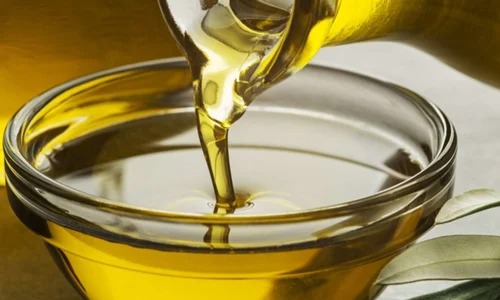
Oilseeds and edible oils are the most sensitive essential commodities.
EDIBLE OILS
Edible Oils has become an essential ingredient of every man's diet, and is the most important source of fats in human nutrition. India with its vast and diverse agro-climatic conditions produce a wide range of oilseeds and edible vegetable oils. Traditionally, the type of fat consumed in a geographical segment depends upon its availability in that particular region. For example, mustard oil is favoured by the population in the Eastern region, as well as in the hilly regions of the Northern belts. Sesame oil is the most preferred oil in the west. Coconut oil is preferred by the Keralities. Inhabitants of the northern plains are basically hard Fat consumers. Of late, things have started changing. Geographical barrier about the consumption pattern of oils seems to be vanishing. Because of technological development as also health awareness. Some of these are cottonseed oil, soyabean oil, sunflower oil, palm oil and its liquid fractions - palmolein and refined rapeseed oil.
Vegetable oils are derived from four sources namely:
(a) The cultivated oil seeds numbering nine i.e. groundnut, rape-mustard, Soyabean, Sesame, Niger, Sunflower, Safflower, Castor and linseed
(b) Perennial oil-bearing material - under this category falls coconut and oil palm
(c) Derived oil-bearing material - under this comes cottonseed and rice bran
(d) Oilseeds of forest and tree origin - sal, mahua, karanja and kusum etc.
Out of the above nine oilseeds, the first seven are edible oils and castor and linseed are Non-Edible. Of nine oilseeds referred to, five namely groundnut, rape-mustard, sesame cluster and linseeds are listed as Major Oilseeds
The consumption of refined palmolein (RBD palmolein) as well as its blending with other oils has increased substantially over the years and is used extensively in hotels, restaurants and in preparation of wide varieties of food products.
The share of raw oil, refined oil and vanaspati in the total edible oil market is estimated roughly at 35%, 60% and 5% respectively.
OILSEEDS
India is the fourth largest oilseeds producer in the world after USA, China & Brazil. It has 20.8% of the total area under cultivation globally, accounting for 10% of global production. The oilseed accounts for 13% of the Gross Cropped Area, 3% of the Gross National Product and 10% value of all agricultural commodities. The country produces groundnut, soybean, sunflower, sesamum, Niger seed, mustard, and safflower oilseeds.
Nearly 72% of the oilseed area is restricted to rainfed farming done by small farmers which leads to poor productivity. However, a breakthrough was realized in oilseed production by introducing the latest crop production technologies. According to third advanced estimates of production, the total Oilseeds production in the country during 2022-23 is estimated at record 409.96 lakh MT which is higher by 30.33 lakh tonnes than the previous year’s oilseeds production.
The production of oilseeds in India has been growing for the last five years. In 2022-23, the production of the country was 40.9 million tonnes. From the years 2015-16 to 2022-23, the compound annual growth rate (CAGR) of production was 5%. This was achieved due to the implementation of various programs like special programmes on mustard & rapeseed during Rabi and cluster demonstrations of improved technology by the Government of India.
The largest oilseed-producing states in India include Andhra Pradesh, Gujarat, Haryana, Karnataka, Madhya Pradesh, Maharashtra, Rajasthan, Tamil Nadu, Uttar Pradesh, and West Bengal. Out of these states, Rajasthan, Gujarat, Madhya Pradesh, and Maharashtra are the top producers with a share of about 20%, 20%, 19% and 16% of the total production, respectively.